Naoshima represents nothing less than aesthetic perfection. The island’s relatively remote, picturesque location, coupled with its array of world-class contemporary art and architecture makes for a truly unique stopover destination. Naoshima welcomes a greater number of foreigners year by year, yet it has thankfully been missing from the mass tourism travel circuit.
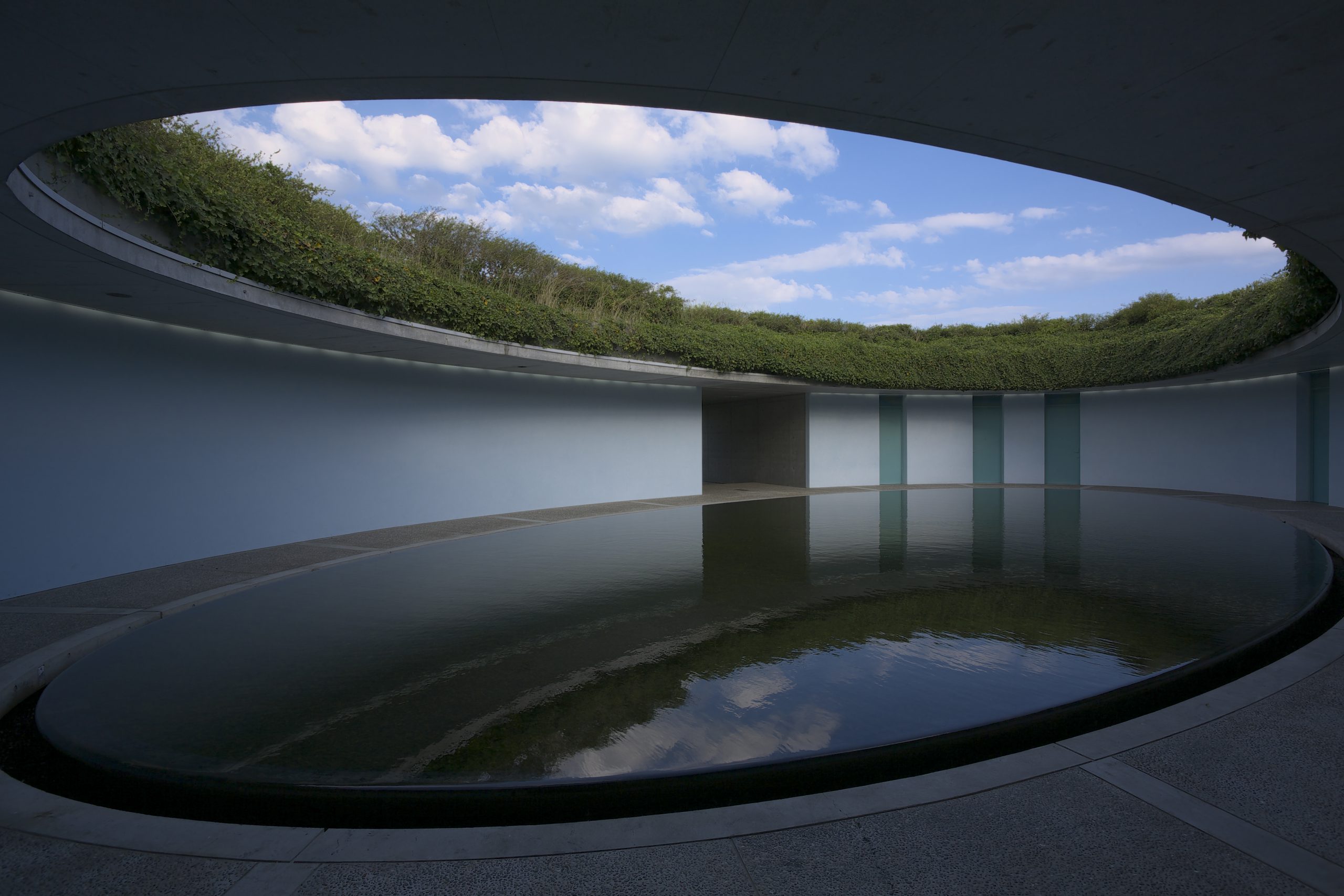
Where To Stay
The Benesse House Hotel can truly be categorized as an immersive experience. The 65-room Benesse House Hotel, the central lodging facility within Benesse Art Site Naoshima consists of four buildings: Museum (10 rooms) allows close contact with the artworks both in a public exhibition space and in each guestroom; Oval (6 rooms; 2 suites & 4 twins), offers beautiful panoramic view of the inland sea and is connected to the museum by a monorail; Park (41 rooms) looks out to the green lawn with open-air artworks to the ocean and the mountains of Shikoku on the far shore, and contains an exclusive lounge, a shop, and Spa; and Beach (8 suites), located on the shoreline with suites only, provides beautiful view of the Seto Inland Sea. Benesse House is both a museum and a hotel. It offers guests opportunities to get close to great art and spend a uniquely rewarding time in dialogue with the works and with themselves.
At the Benesse House, the Museum restaurant Issen offers Japanese Kaiseki cuisine, and the Terrace restaurant offers French cuisine. We were particularly fond of the desserts there since they looked like they could be part of the museum as well. This golden orb of sugar and cream with pink flowers was delicious.
The Benesse House Spa, which can further enhance your relaxed stay, offers various treatments (advanced reservations recommended!). The Park Lounge has a wide selection of art books and self-serving tea/coffee. We enjoyed having morning coffee/tea at the guestroom in Park and the Park Lounge while admiring the sculptures and landscape. The Park Lounge is now called “Lounge”, as it has become a part of Hiroshi Sugimoto Gallery, which newly opened in Park Wing in March 2022. We felt that everyone in the Benesse House team was sincere and high-touch and that the high-end service was provided everywhere at the Benesse House. It is palpable that the staff seem proud to work in such a unique and engaging atmosphere.
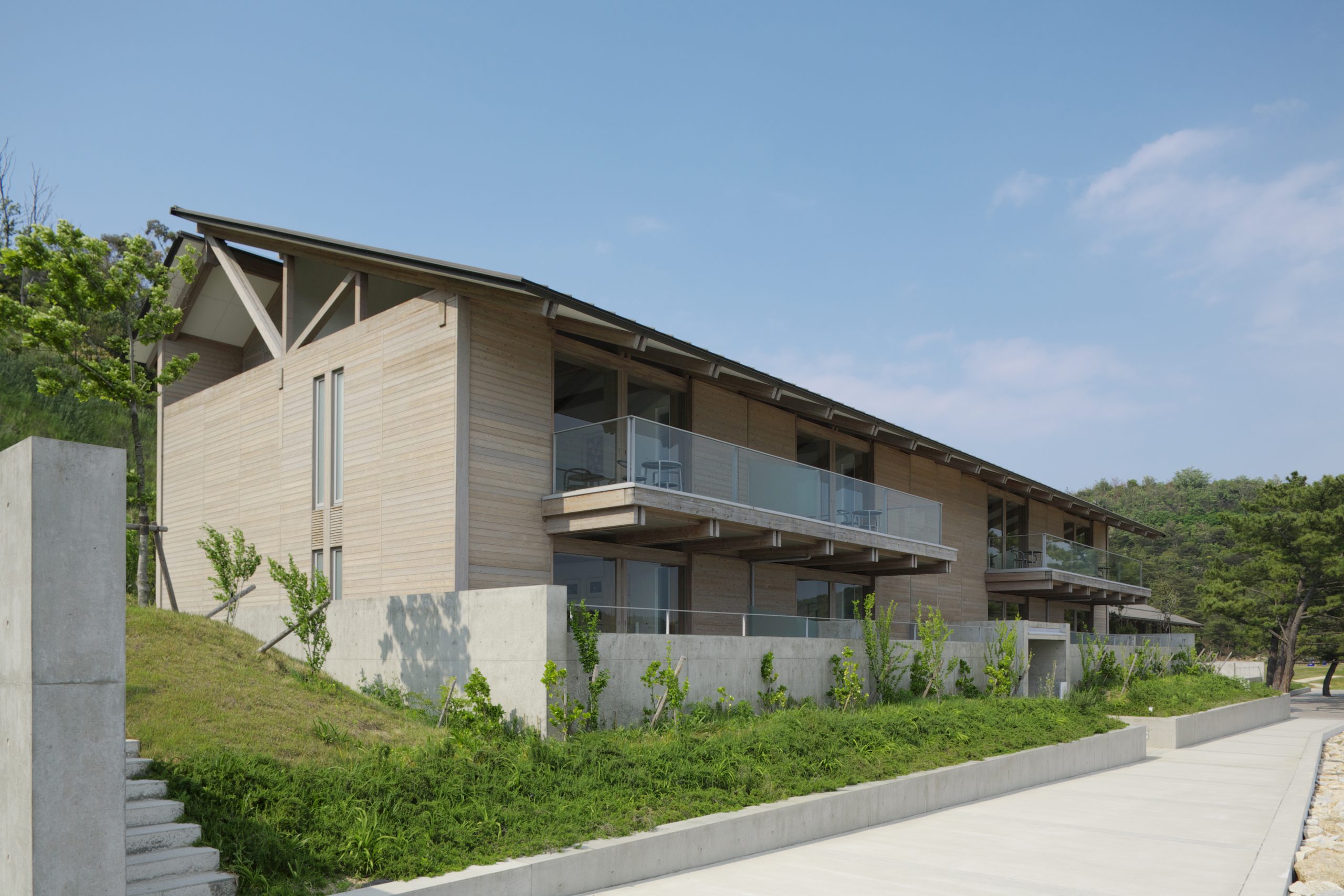
Museums
Among our favorite villages is Honmura, home to the Art House Project. We loved every artwork in the Art House Project, but the one that we were mesmerized by the most is Minamidera. Minamidera, named after the temple that had once existed on the site, was designed by Tadao Ando with James Turrell’s artwork inside. When you enter, the building opens on a huge expanse of ebony darkness, and after 10-15 minutes of observation, a seemingly optical illusion gradually unfolds. To see the true beauty of this piece, you need patience and to conquer a little bit of fear. Turrell’s piece must be among our most memorable artwork experiences anywhere.
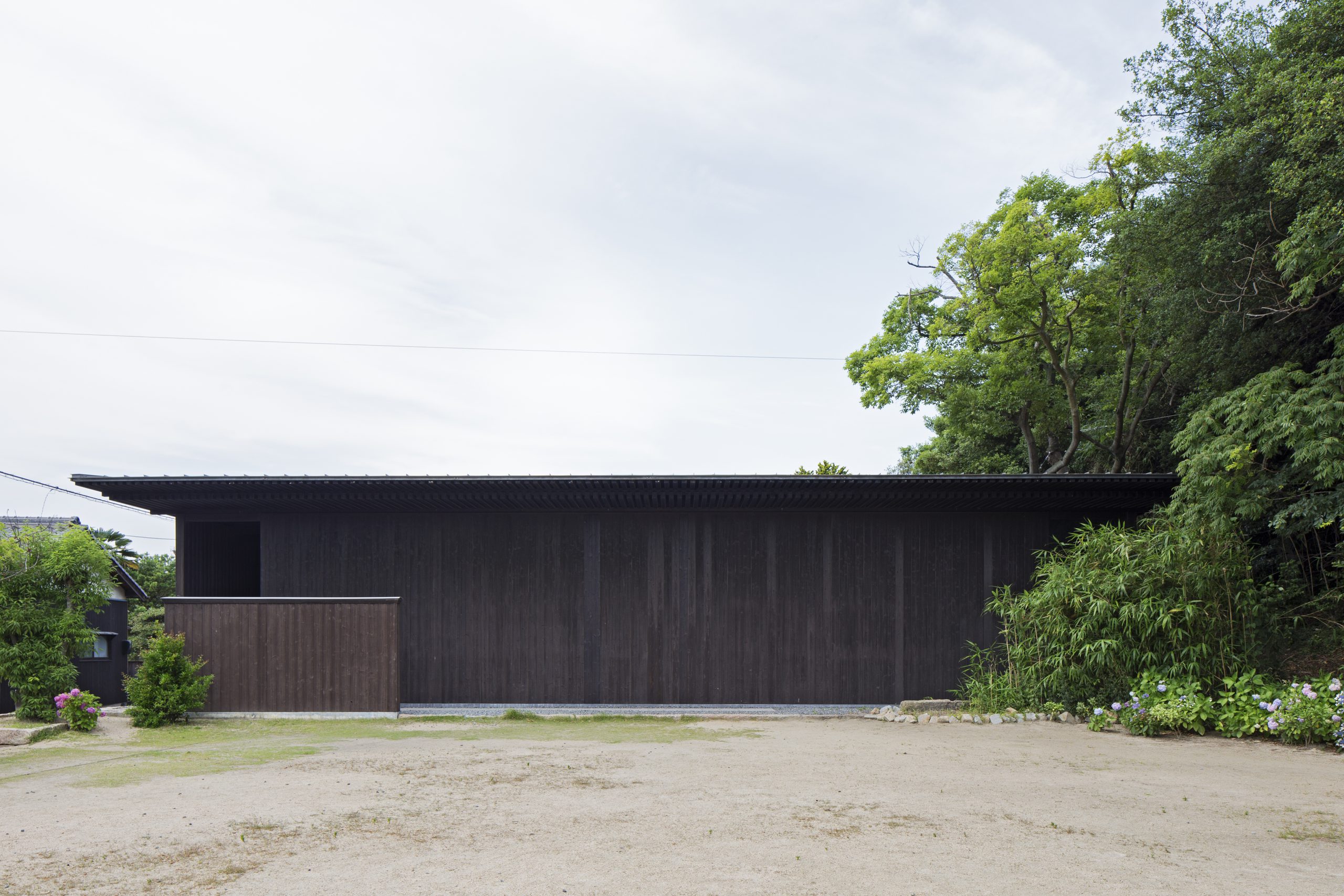
“Benesse Art Site Naoshima” is the collective name for all art-related activities conducted on the islands of Naoshima and Teshima in Kagawa Prefecture and on Inujima Island in Okayama Prefecture.
The Chichu Art Museum requires an advanced reservation. With this reservation, you can see that the museum exists in harmony with the nature around it, having been built mostly underground so as not to interfere with the surrounding landscape. Despite its almost completely underground location, the museum lets in an abundance of natural light, providing a variety of experiences with the art contained within, depending on the time of day and season of the year. The concept of the museum is to provide a place for people to reflect on the relationship between mankind and nature. The reason this museum stood out was because of yet another piece of Turrell’s work that uses artificial light. The “Open Field” experience by James Turrell allows the viewer to move through space in a new way. You are physically able to walk through the piece and see your perspective change in real-time.
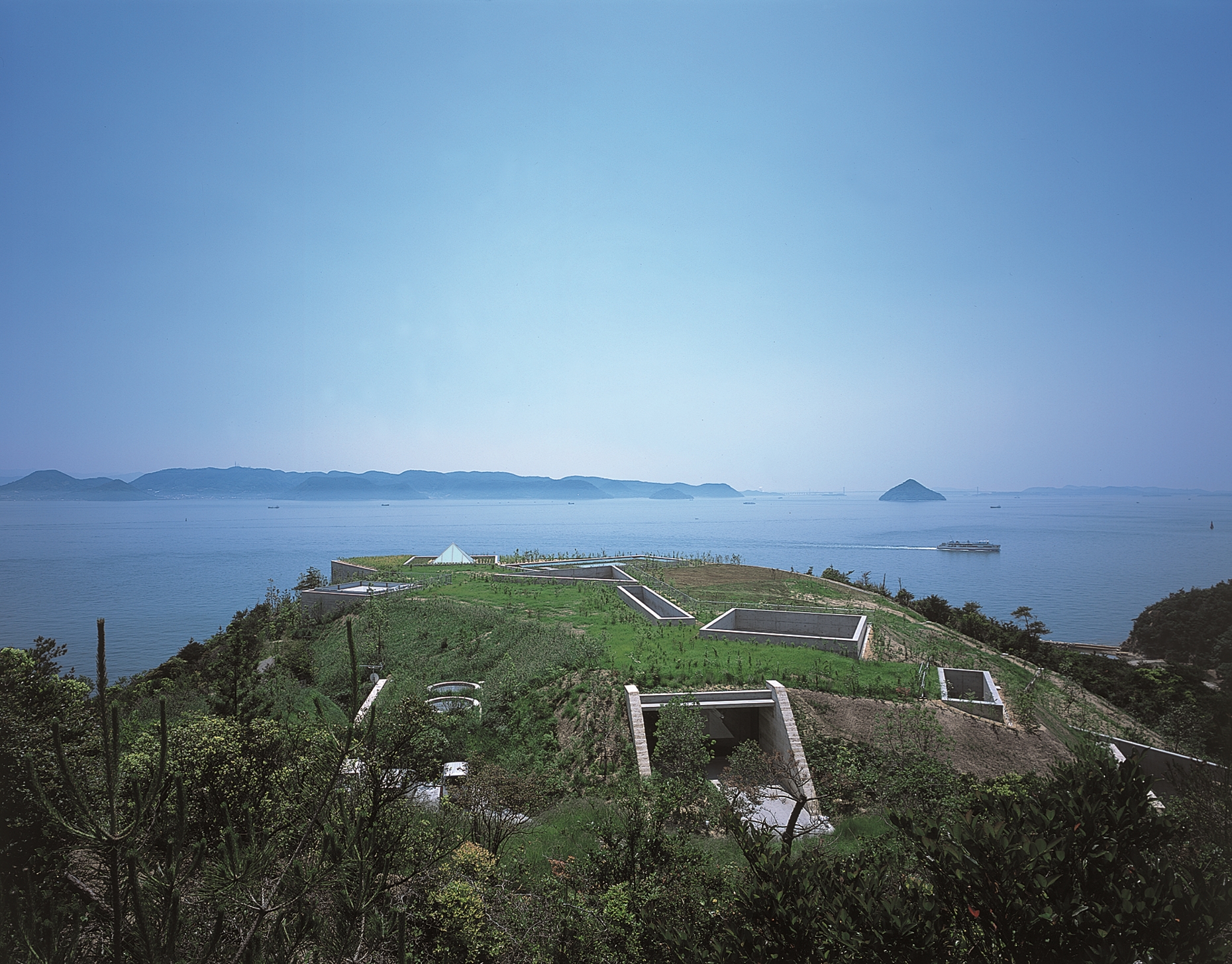
At the Miyanoura Port, there is the Red Pumpkin by Yayoi Kusama. On the island, you can also find “Pumpkin” by Kusama, which is yellow. These pumpkins have become a calling card for Naoshima Island. The difference between the two is that the red pumpkin is large enough to go into, which is a worthwhile adventure. Yayoi Kusama’s famous pumpkins have a unique, spotted art style. This style has left its mark on Naoshima and has become a must-see when visiting. Regrettably, Kusama’s famous yellow pumpkin was washed away and damaged in August of 2021. At the moment, there are no plans to replace the pumpkins, but we are crossing our fingers to see it reinstalled.
Teshima Island Extension
A 22-minute ferry ride from Naoshima Island brings you to Teshima Island. Located in the Seto Inland Sea, Teshima is a small, rural island with just 1,000 inhabitants and three small fishing villages connected by a road circling the centrally located Mount Danyama. Though a slow-paced environment, Teshima has quickly become a must-see destination for all lovers of contemporary art. We believe a full-day exploration here is necessary to fully take in the extraordinary art exhibitions. The primary attraction here is the Teshima Art Museum, though we also find the immersive Les Archives du Coeur to be particularly special. The rural and farm-like landscape of Teshima is a pleasant respite from the bustling streets of Tokyo and Kyoto.
Museums
Teshima Art Museum
A visit to Teshima Island would be simply incomplete without wandering about the impressive Teshima Art Museum. Designed by architect Ryue Nishizawa and artist Rei Naito, the museum’s minimalist, organizer structure seamlessly blends with the surrounding landscape. Inside, visitors encounter a single expansive space with no pillars or walls, flooded with natural light filtering through two oval-shaped openings in the roof. This immersive environment encourages contemplation and a heightened awareness of one’s surroundings. Visitors can witness elements of light, wind, and sound within the museum, as well as participate in various events and workshops that explore the intersection of art, nature, and the senses.
Teshima Yokoo House
Teshima Yokoo House is the perfect blend of traditional architecture and contemporary artistry. Once the residence of local fishermen, this historic building has been transformed into an art space showcasing the works of renowned artist Tadanori Yokoo. Visitors can enjoy a unique fusion of Yokoo’s vibrant, psychedelic, and rustic charm of a traditional Japanese home. Stepping inside, guests can explore various rooms adorned with Yokoo’s colorful paintings, intricate collages, and surreal imagery, each offering a glimpse into the artist’s eclectic and imaginative world. We feel this is a must-visit destination for art enthusiasts, cultural explorers, and anyone seeking a memorable and immersive artistic experience.
Les Archives du Coeur
Les Archives du Coeur is a deeply personal art installation created by renowned artist Christian Boltanski. This moving exhibit invites visitors to participate by recording their heartbeat, which is then stored in the archives as a testament to the universal human experience. Housed in a former school building, the installation is comprised of thousands of speakers suspended from the ceiling, each emitting the recorded heartbeats of individuals from around the world.
Following a private tour of Teshima Island, catch a 22-minute ferry ride back to Naoshima Island.
you must not like my face since you did facetime me the other weekend
Tips & Tricks
Try avoiding visiting on Mondays since all the museums, except for Benesse House Museum (including Valley Gallery), are closed. The weekends and holidays can also be tough since there will be more of a crowd.
You will encounter many small eateries offering Udon, a specialty of Kagawa prefecture (most delicious!), to which the town of Naoshima belongs, and get a fun snapshot of Japanese daily life in local villages while exploring the island. On our visit, we stopped at the Apron Cafe, which is filled with classic Japanese ingredients and dishes such as lotus root, daikon radishes, and miso soup with Okayama vegetables. When we went there, it was raining, so they had the perfect meals to warm us up.
16.6 kilometers (10 miles) in circumference and with a population of a mere 3,100, the small island is comprised of three districts: the Miyanoura District, the Honmura District, and the Tsumu’ura District. For Benesse House Hotel guests, a courtesy shuttle bus service is available, but you may also want to try walking or biking (bike rentals available at local shops) to get around the island. We recommend the bike rental, seeing as it’s a freer way to explore the island. Since there are some larger hills, the electric bikes will make your experience that much more enjoyable. We always suggest using one of our private guides to take you through the museums to receive a more in-depth understanding of the artwork.
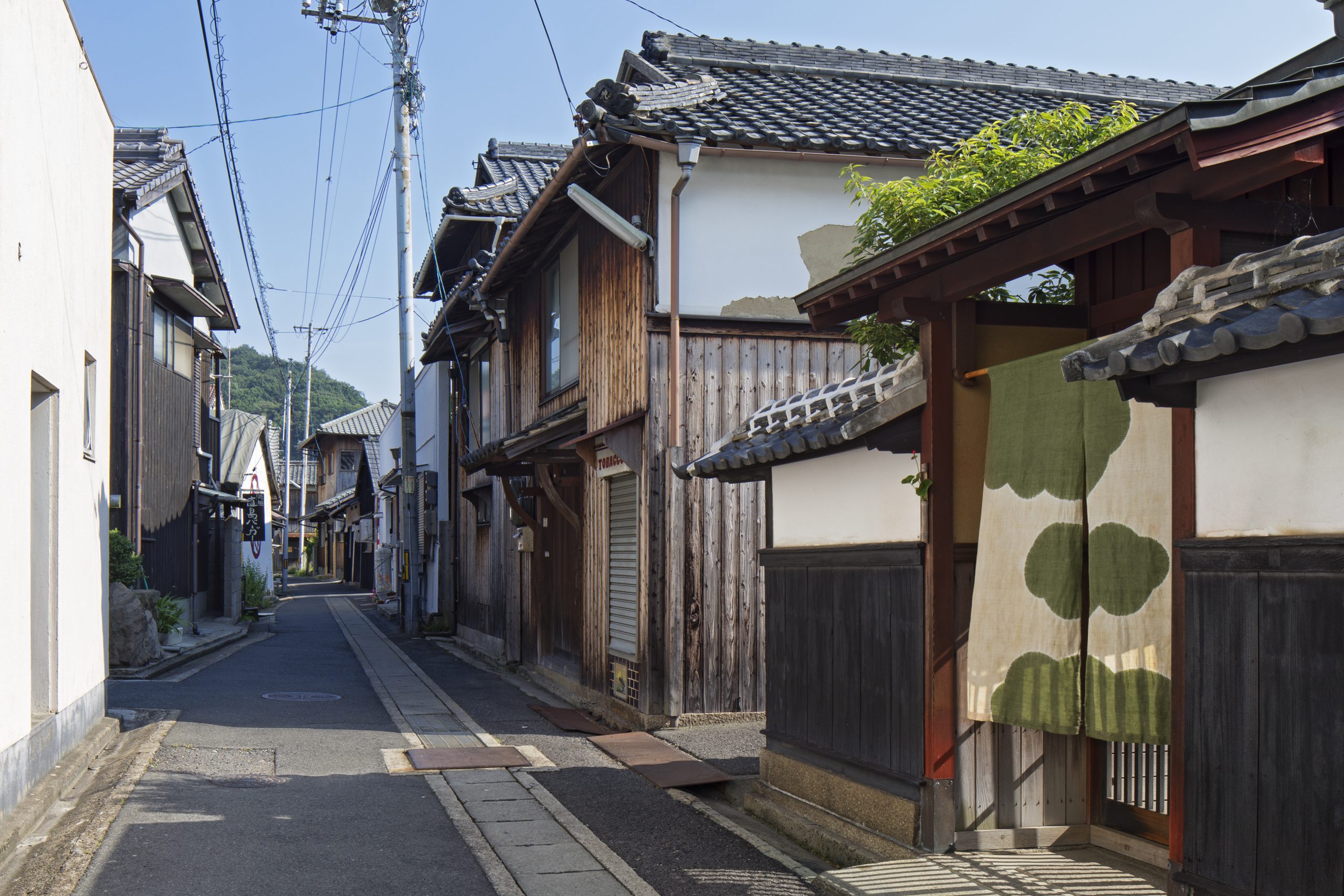
Enjoy this truly amazing place!
– Zen Lynch
Image Credits:
Image 2 Benesse House Oval Photo: Osamu Watanabe
Image 3 Benesse House Beach Photo: Osamu Watanabe
Image 4 Art House Project “Minamidera” Architect: Tadao Ando Photo: Ken’ichi Suzuki
Image 5 Chichu Art Museum Photo: Fujituska Mitsumasa
Image 6 Honmura Photo: Ken’ichi Suzuki